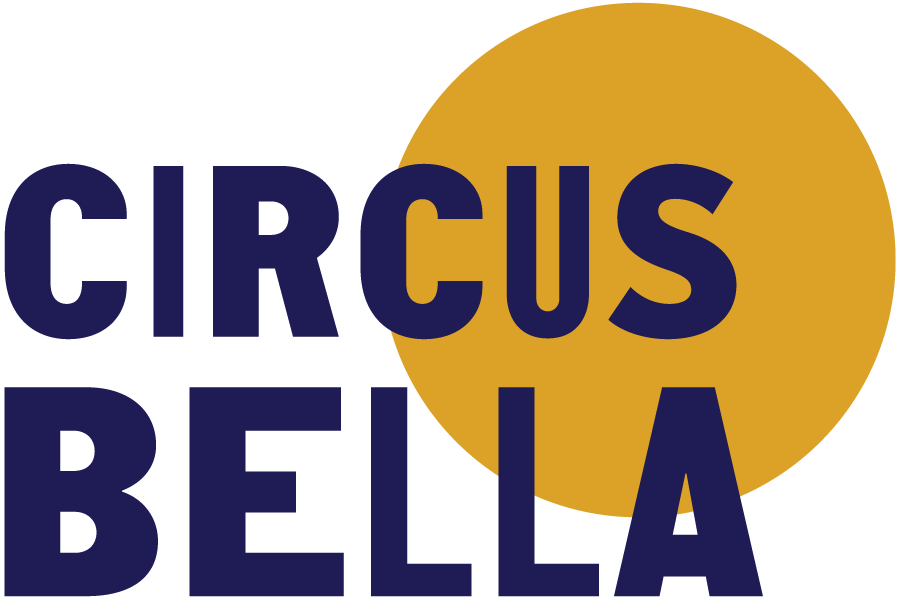Into the Ring
The History of the Ring: Form and Function
Circus Bella comes alive in the Ring: A performance within the ring is a unique experience for those both in and around the ring. When gathered around the Circus Ring, spectators not only provide an audience for the performers within its circumference but also enrich the experience of the performer by surrounding them with their gasps of joy, terror, and delight. The show is an intimate journey between the performers and the audience.
by historian Dominique Jando
The Origins of the Ring:
Modern circus was created in London, in 1770, by a trick rider named Philip Astley. Trick riders were very popular at the time – an era when horses were an important part of everyday life. Astley, like all performing trick riders, presented his “feats of horsemanship” in a circular arena, which presented two main advantages: the riders were constantly in the audience’s line of sight (which was not the case when they dashed back and forth in open fields), and they could take advantage of the centrifugal force as they stood on their horses while galloping in the round. (For an example of trick riding, see: www.circopedia.org/Aleksandrov-Serge_Troupe_Video_(2015).)
Astley’s place of entertainment was called Astley’s Amphitheatre; the circular arena in which he performed was called “the circus” or “the circle.” In time, the circus became the generic name for the place of entertainment (the first one to take that name was the Royal Circus in London in 1782), and the ring became the name of the circle in which performers appeared (“circus” in English as in Latin means “circle”).
Therefore, it is the ring that came to define the place of entertainment, and it can be argued that a circus without a ring is not a circus! In fact, the ring brought more to the circus than just a convenient staging area for equestrians: it allowed a total view of the performers, without any hidden angles, and provided the audience with a communal experience in which the performers were an integral part of their world. To a large extent, this experience is the reason for the universal success of the circus.
Since performers, and notably equestrians, traveled from one circus to another, it was important that they found wherever they went a similar performing space. So the diameter of the circus ring was soon settled everywhere at about 42 feet (or 13 meters) – the size of the ring in Astley’s many “Amphitheaters” (he built several of them in the United Kingdom, and even one in Paris) and in consequence, circus performers, especially troupes, built their acts for that specific space – and continue to do so to this day.
pc. Jarell Phillips
Circus Bella’s Ring:
Our custom-built ring curb is a bit smaller (32 feet diameter) than that of Phillip Astley and was designed by friend and mentor Jay Walter Zoppe. It was built in 2011 at the UC Davis scene shop and has survived many load-ins, ice cream spills, artist bows, company meetings, and an occasional handstand.
The blue ring mat lying on the ground inside the ring has accompanied us for every show along our 12-year journey. Under the expertise of Jay Kotcher and Tom Munn, it was hand-stretched and painted at the San Francisco Opera scene shop in the Dogpatch (a relic of old San Francisco now torn down to make way for condominiums). We made a little movie of us painting:
About the author: Dominique Jando
Born in Paris, France, Dominique Jando made his debut in the circus ring as a clown at the legendary Circus Medrano in Paris. He later perused a career in the theater and the circus before coming to the Unided States where he served as Associate Artistic Director of New York’s, Big Apple Circus for twenty years. He is vice-president and artistic director of Lone Star Circus in Dallas, Texas and the co-founder, curator of Circopedia.org, an online enc yclopeide of the international circus, and active board member for Circus Bella. He has published several books on the history of circus, variety and clowns in both Europe and the United States and has written numerous articles for magazines around the world. Today, he lives with his wife Elena Panova in their home in SF with their cats, Minoushka and Polina.
Read the book: www.amazon.com/Philip-Astley-Horsemen-invented-Circus
And the wonderful Circopedia: www.circopedia.org
Curious about our beginnings? Read more about the origin story of Circus Bella here: https://www.circusbella.org/blog/2020/7/11/how-a-circus-is-born





